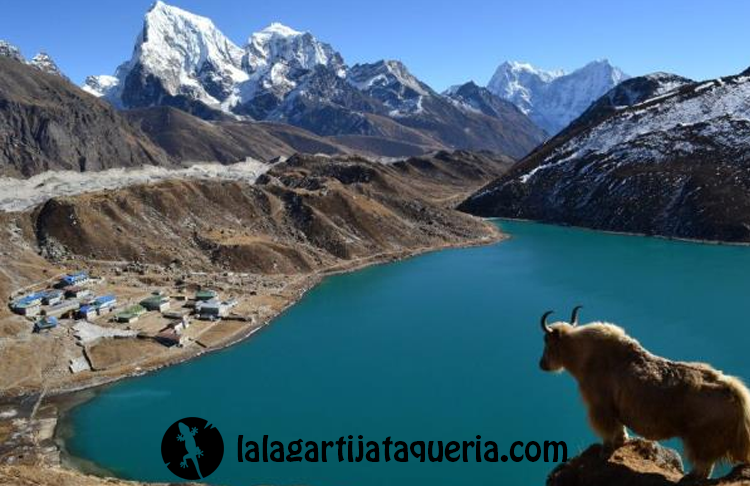
Nepal Vacation Guide for the Best Travel Experience
Nepal is a dream destination for travelers who seek a blend of natural beauty, rich culture, and thrilling adventures. Whether you are planning to trek through the majestic Himalayas, explore ancient temples, or immerse yourself in vibrant festivals, Nepal vacation guide is here to help you plan the perfect getaway. From understanding the best seasons to visit, to identifying key activities for each time of year, this guide will provide you with all the essential information.
Best Time to Visit Nepal
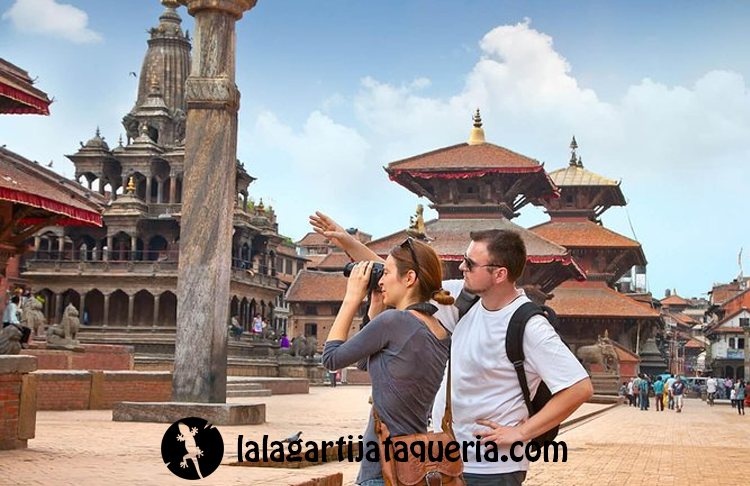
When planning your Nepal vacation guide, timing is key to fully experiencing the country’s diverse offerings. The best time to visit Nepal largely depends on what activities you wish to pursue, as different seasons offer varying climates and conditions. In general, the most popular periods are during the spring (March to May) and autumn (September to November) when the weather is clear and mild, perfect for outdoor adventures and sightseeing.
During these months, you will enjoy excellent visibility of Nepal’s iconic mountain ranges, along with favorable conditions for trekking, cultural tours, and wildlife safaris. However, even the winter and monsoon seasons have their own appeal, offering quieter trails, unique festivals, and lush, rain-soaked landscapes.
Seasons and Weather in Nepal
Nepal experiences four main seasons, each with distinct weather patterns:
- Autumn (September to November): This is the most popular time for tourists, as the monsoon has just ended, leaving behind clear skies and pleasant temperatures ranging from 15°C to 24°C. This is the perfect time for trekking and exploring Nepal’s cultural landmarks.
- Spring (March to May): Known for its blooming rhododendrons and moderate weather, spring is another ideal season for trekking and sightseeing. Temperatures range from 16°C to 23°C, offering warm days and cool nights. It’s also the season for several vibrant festivals like Holi.
- Winter (December to February): While the temperatures can drop significantly, especially in higher altitudes, winter offers stunning, snow-covered landscapes and fewer crowds. Daytime temperatures in Kathmandu range from 9°C to 12°C, making it ideal for cultural visits to cities like Pokhara and Kathmandu.
- Monsoon (June to August): This season brings heavy rainfall, primarily in July and August, making trekking more challenging due to slippery paths. However, it is a great time for those looking to avoid crowds and witness Nepal’s lush greenery and waterfalls.
Trekking Seasons and Outdoor Activities
For those planning a Nepal vacation guide, trekking is often the highlight, and the choice of season will greatly influence your experience.
- Autumn Trekking: This is considered the best time for trekking, as the post-monsoon air is clear, providing breathtaking views of the Himalayas. Popular routes like the Everest Base Camp and Annapurna Circuit are bustling with trekkers during these months.
- Spring Trekking: Another excellent time for trekking, with slightly warmer temperatures and blooming flowers, creating a scenic backdrop for treks. The rhododendron forests along the Annapurna and Langtang regions are particularly beautiful at this time.
- Winter Trekking: While not as popular, winter trekking is possible, especially in lower altitude regions. Trails are quieter, and you can enjoy peaceful landscapes with fewer tourists.
- Monsoon Activities: While trekking may be more challenging during the monsoon, this season is perfect for visiting Nepal’s southern regions like Chitwan, where you can go on a jungle safari and witness wildlife such as Bengal tigers and one-horned rhinos.
Top Destinations in Nepal
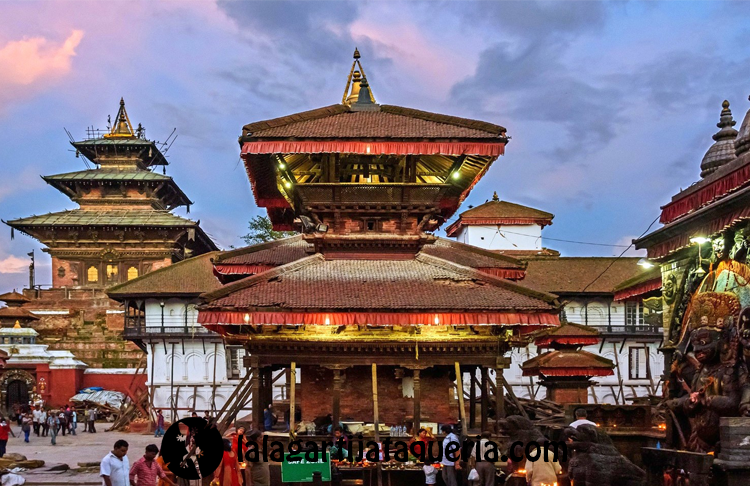
When planning your Nepal vacation guide, it’s essential to know which destinations are must-sees to make the most of your trip. Nepal is rich with breathtaking landscapes, historical sites, and vibrant wildlife, offering something for every kind of traveler. From the bustling streets of Kathmandu to the serene lakes of Pokhara and the sacred birthplace of Buddha in Lumbini, each destination brings its own unique charm. Below, we explore some of the top destinations you should include in your itinerary, each offering unforgettable experiences.
Exploring Kathmandu Valley’s Cultural Treasures
The Kathmandu Valley is the cultural heart of Nepal, brimming with ancient temples, palaces, and UNESCO World Heritage Sites. A key highlight of your Nepal vacation guide, this area includes the three historic cities of Kathmandu, Bhaktapur, and Patan, each offering a wealth of artistic and architectural wonders.
- Kathmandu Durbar Square: This historical square is a must-visit, featuring the royal palace and intricately carved wooden temples. It’s the perfect place to immerse yourself in Nepal’s ancient history and vibrant traditions.
- Swayambhunath (Monkey Temple): Perched atop a hill, this Buddhist stupa offers panoramic views of the city and is an important pilgrimage site for both Buddhists and Hindus.
- Patan Durbar Square: Known for its remarkable Newari architecture and museums, Patan is a hub for artisans and craftspeople. Don’t miss the Krishna Mandir temple, carved entirely from stone.
Pokhara: Nepal’s Scenic Lakeside City
Nestled beside the tranquil Phewa Lake and surrounded by the Annapurna mountain range, Pokhara is a highlight in any Nepal vacation guide. This city is renowned for its natural beauty and as the starting point for many of Nepal’s iconic trekking routes.
- Phewa Lake: Take a boat ride on this peaceful lake, with the stunning reflection of the snow-capped mountains on the water’s surface.
- Sarangkot: A popular viewpoint for witnessing breathtaking sunrise and sunset views over the Annapurna and Dhaulagiri ranges.
- Adventure Activities: Pokhara is also a hotspot for adventure sports like paragliding, bungee jumping, and zip-lining, making it a favorite for thrill-seekers.
Chitwan National Park: Wildlife and Jungle Safaris
For wildlife enthusiasts, Chitwan National Park is an unmissable stop on your Nepal vacation guide. This UNESCO World Heritage Site is home to diverse ecosystems and rare species, offering an exciting jungle experience.
- Jungle Safaris: Embark on a jeep or elephant safari through the dense jungles to spot one-horned rhinos, Bengal tigers, and wild elephants. You can also opt for a canoe ride along the Rapti River to observe crocodiles and bird species.
- Cultural Experience: Visit the nearby Tharu villages to learn about the local indigenous culture, attend traditional dances, and explore the lifestyle of the people who have lived in harmony with nature for generations.
Lumbini: The Birthplace of Buddha
Lumbini is one of the most spiritually significant destinations in Nepal, as it is the birthplace of Siddhartha Gautama, who later became the Buddha. For those interested in history, spirituality, and peace, Lumbini is a must-visit on your Nepal vacation guide.
- Maya Devi Temple: The main attraction in Lumbini, this temple marks the exact spot where Queen Maya Devi gave birth to Buddha. It is surrounded by peaceful gardens and ancient monastic ruins.
- Lumbini Monastic Zone: This area is home to monasteries built by Buddhist communities from around the world, offering a serene and contemplative environment for visitors.
Each of these destinations adds a unique layer to the richness of Nepal’s offerings, making your vacation a journey through history, nature, and spirituality.
Trekking in Nepal
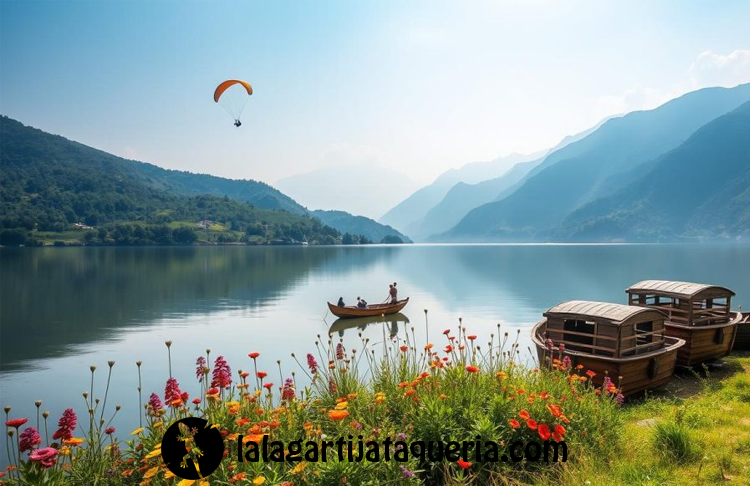
Trekking in Nepal is an adventure of a lifetime, attracting outdoor enthusiasts from around the globe. Known for its stunning landscapes and diverse terrains, Nepal offers treks suitable for all skill levels, from challenging high-altitude journeys to gentle walks through picturesque valleys. In this section of your Nepal vacation guide, we will explore some of the most iconic treks that highlight the country’s natural beauty and cultural richness. Whether you’re aiming for the heights of the Himalayas or seeking beginner-friendly trails, Nepal has something for everyone.
Everest Base Camp Trek: A Journey to the World’s Roof
The Everest Base Camp Trek is perhaps the most famous trekking route in the world, drawing adventurers eager to experience the majesty of Mount Everest firsthand. This trek is a highlight of your Nepal vacation guide, offering breathtaking views, rich Sherpa culture, and unforgettable challenges.
- Trail Overview: The trek typically takes about 12 to 14 days, beginning in the bustling town of Lukla. Along the way, trekkers will pass through charming Sherpa villages, ancient monasteries, and lush forests, culminating in the breathtaking sight of Everest at Base Camp.
- Cultural Experience: As you trek, you’ll have the opportunity to experience the vibrant Sherpa culture, visiting local markets, monasteries, and interacting with the warm-hearted locals who call this region home.
Annapurna Circuit: One of the World’s Best Treks
Renowned as one of the best treks globally, the Annapurna Circuit offers a diverse landscape, from lush subtropical forests to arid high-altitude deserts. This trek is a must-do in your Nepal vacation guide, providing an immersive experience in nature and culture.
- Diverse Terrain: Spanning approximately 160-230 km (depending on the route), this trek takes you through various climatic zones, showcasing the region’s stunning biodiversity and breathtaking views of the Annapurna range.
- Throng La Pass: The trek culminates at Throng La Pass, one of the highest trekking passes in the world, where trekkers can marvel at panoramic views of some of the highest peaks on the planet.
Beginner-Friendly Treks in Nepal
For those new to trekking or seeking a more relaxed experience, Nepal offers several beginner-friendly treks that allow you to enjoy the beauty of the Himalayas without the extreme challenges of high-altitude trekking. These trails are perfect inclusions in your Nepal vacation guide.
- Ghorepani Poon Hill Trek: This relatively short trek is ideal for beginners, taking about 4-5 days. It offers stunning sunrise views over the Annapurna and Dhaulagiri ranges from Poon Hill, combined with beautiful rhododendron forests.
- Langtang Valley Trek: Accessible and picturesque, the Langtang Valley trek can be completed in about 7-10 days. It offers diverse landscapes and the chance to experience the local Tamang culture, all while being less crowded than other routes.
Each of these trekking experiences showcases the stunning beauty and cultural depth of Nepal, ensuring that your journey through this incredible country is unforgettable.
Nepalese Cuisine and Dining Tips

Exploring Nepalese cuisine is a delightful part of any Nepal vacation guide. The country’s culinary scene is a reflection of its diverse cultures and traditions, offering a rich tapestry of flavors, textures, and aromas. From hearty meals to street snacks, Nepalese food is not only delicious but also an integral part of the local lifestyle. In this section, we will delve into must-try dishes and essential dining tips to ensure you have a safe and enjoyable culinary experience during your visit.
Must-Try Dishes: Dal Bhat, Momos, and More
When it comes to Nepalese cuisine, several iconic dishes are a must-try, each representing the heart of Nepalese culture:
- Dal Bhat: This traditional meal consists of lentil soup (dal) served with rice (bhat), accompanied by vegetables and sometimes meat. It’s a staple in Nepal and offers a balanced, nutritious meal that can be found in homes and restaurants alike.
- Momos: These delicious dumplings can be filled with vegetables, chicken, or buffalo meat. Steamed or fried, momos are a popular street food and a great snack option while exploring cities like Kathmandu and Pokhara.
- Sel Roti: A traditional rice-based doughnut, sel roti is crispy on the outside and soft on the inside. It’s often enjoyed during festivals but can be found year-round in local markets.
Staying Safe While Eating: Food Hygiene and Gastro Issues
While indulging in the delicious flavors of Nepal, it’s important to prioritize food safety to avoid gastrointestinal issues that can affect your trip. Here are some essential tips for enjoying Nepalese cuisine safely:
- Choose Clean Eateries: Opt for restaurants and street vendors that appear clean and are busy with locals. High turnover often indicates fresh food and better hygiene standards.
- Drink Bottled Water: Always choose bottled or purified water, as tap water may not be safe to drink. Additionally, avoid ice in drinks unless you’re certain it’s made from purified water.
- Be Cautious with Raw Foods: Raw fruits and vegetables can be a source of contamination. Opt for cooked foods when possible and ensure fruits are peeled before consuming.
Accommodation Options in Nepal

Finding the right place to stay is an essential part of your Nepal vacation guide, as it can greatly enhance your travel experience. Nepal offers a wide range of accommodation options to suit various budgets and preferences, from basic hostels to luxurious eco-lodges nestled in nature. Understanding your options will help you choose accommodations that provide comfort, convenience, and a taste of local culture. In this section, we’ll explore the diverse types of accommodation available across the country, whether you’re in the heart of Kathmandu or trekking in the Himalayas.
From Budget Hostels to Luxury Eco-Lodges
Nepal caters to all types of travelers, and its accommodation scene reflects this diversity:
- Budget Hostels: Ideal for backpackers and budget-conscious travelers, hostels in cities like Kathmandu and Pokhara offer affordable rates and a chance to meet fellow travelers. Many hostels provide dormitory-style rooms and communal spaces for socializing, along with basic amenities.
- Mid-Range Hotels: For those seeking a bit more comfort without breaking the bank, mid-range hotels offer private rooms with en-suite facilities, Wi-Fi, and often include breakfast. Many of these hotels are conveniently located near popular attractions.
- Luxury Eco-Lodges: For a unique experience, consider staying in one of Nepal’s eco-lodges or boutique hotels. These accommodations are designed to minimize environmental impact while providing luxurious amenities, stunning views, and often include organic meals made from local produce.
Staying in Teahouses While Trekking
When trekking in the Himalayas, staying in teahouses is a quintessential part of the experience. These small, family-run lodges offer basic accommodations and meals, providing a warm and welcoming atmosphere:
- Comfort and Hospitality: Teahouses typically feature simple rooms with twin beds and shared bathrooms. The hospitality of the local owners adds a personal touch to your stay, and you’ll often enjoy delicious home-cooked meals made from local ingredients.
- Cultural Exchange: Staying in teahouses gives you a chance to interact with locals, learn about their way of life, and experience the stunning natural beauty of the surrounding landscapes.
- Convenience: Teahouses are strategically located along popular trekking routes, making them a convenient option for trekkers. You’ll find them equipped with essential services, such as charging stations and hot showers, making your trek more comfortable.
Practical Travel Tips for Nepal

Traveling to Nepal can be an enriching experience, but being well-prepared is essential for navigating its unique landscapes and cultural nuances. This section of your Nepal vacation guide focuses on practical travel tips that will help you make the most of your adventure. From transportation options to understanding visa requirements and managing your finances, these insights will ensure a smooth and enjoyable trip.
Transportation: Navigating Nepal’s Rough Roads
Getting around Nepal can be challenging due to its mountainous terrain and often rough road conditions. Here are some key transportation options to consider:
- Domestic Flights: For quicker travel between major cities and trekking regions, domestic flights are a convenient option. Airlines like Yeti Airlines and Buddha Air operate flights connecting Kathmandu to Pokhara, Lukla, and other popular destinations.
- Buses and Microbuses: Long-distance buses are a common way to travel between cities. While they are budget-friendly, be prepared for long travel times and bumpy roads. Tourist buses often provide a more comfortable experience, with better amenities.
- Taxis and Ride-Sharing: In cities like Kathmandu and Pokhara, taxis are readily available. It’s advisable to agree on a fare before your ride. Ride-sharing apps like Pathao are also gaining popularity for local travel.
Visa and Entry Requirements
Before traveling to Nepal, it’s crucial to understand the visa requirements:
- Visa on Arrival: Most tourists can obtain a visa on arrival at Tribhuvan International Airport in Kathmandu. Ensure you have a valid passport, a passport-sized photo, and sufficient cash (USD or Euro) to pay for the visa fee.
- Visa Types: Tourist visas are generally issued for 15, 30, or 90 days. Make sure to check the latest regulations and apply in advance if necessary, especially for extended stays.
- Customs Regulations: Familiarize yourself with customs regulations to avoid issues upon entry. There are restrictions on certain items, so it’s best to check the official guidelines before your trip.
Currency, ATMs, and Money-Saving Tips
Understanding the financial landscape is essential for managing your expenses in Nepal:
- Currency: The official currency is the Nepalese Rupee (NPR). It’s advisable to carry some cash, especially in rural areas where card payments may not be accepted.
- ATMs: ATMs are available in major cities, but they may not always accept foreign cards. It’s a good idea to withdraw cash in larger cities before heading to remote areas.
- Money-Saving Tips: Consider using public transportation, eating at local eateries, and staying in guesthouses or teahouses to save money. Bargaining is common in markets, so don’t hesitate to negotiate prices for goods and services.
Safety and Health Considerations
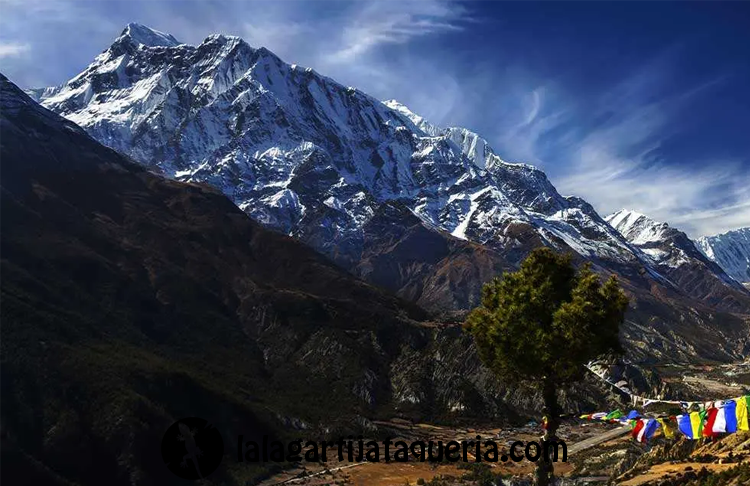
When traveling to Nepal, especially for trekking and high-altitude activities, safety and health should be a top priority. The country’s diverse geography, from bustling cities to remote mountain areas, can pose various risks if you’re unprepared. In this section of your Nepal vacation guide, we will explore essential safety and health considerations to help you stay safe during your adventure, from dealing with altitude sickness to ensuring you have adequate travel insurance.
Altitude Sickness: How to Prevent and Handle It
Altitude sickness, or Acute Mountain Sickness (AMS), is a common concern for trekkers in Nepal, particularly in regions like Everest Base Camp or Annapurna. As you ascend to higher altitudes, the decrease in oxygen levels can cause symptoms such as headaches, dizziness, nausea, and fatigue. Here’s how to manage and prevent altitude sickness:
- Gradual Ascent: The best way to prevent altitude sickness is by acclimatizing slowly. Avoid ascending more than 300-500 meters per day once you’re above 3,000 meters.
- Hydration: Drink plenty of water to stay hydrated, but avoid alcohol and caffeine, which can dehydrate your body and worsen symptoms.
- Medication: Consider carrying Diamox (acetazolamide), a medication that helps prevent and reduce the symptoms of altitude sickness. Always consult your doctor before starting any medication.
- Know the Signs: Early detection of symptoms is crucial. If you start feeling unwell, descend immediately and rest. In severe cases, seek medical attention or use oxygen if available.
Travel Insurance: What You Need for Trekking
Having proper travel insurance is essential when trekking in Nepal, as accidents and emergencies can happen, especially in remote areas. Here’s what to look for when choosing the right travel insurance for your trek:
- Trekking Coverage: Ensure your policy specifically covers trekking at high altitudes. Most standard travel insurance plans do not cover treks above 3,000 meters, so look for a policy that includes coverage for altitudes up to 5,000 meters or higher if you plan to trek routes like Everest Base Camp.
- Helicopter Evacuation: In case of severe illness or injury, helicopter evacuation may be necessary, especially from remote trekking regions. Make sure your insurance covers emergency evacuation costs.
- Medical Coverage: Your policy should include comprehensive medical coverage for accidents, altitude sickness, and any other illnesses that may occur during your trip.
Conclusion
As you plan your Nepal adventure, this Nepal vacation guide offers you the essential insights to make your trip unforgettable. Whether you’re trekking through the breathtaking Himalayas, exploring ancient temples, or savoring the flavors of Nepalese cuisine, each experience will leave you with lasting memories. By considering practical travel tips, safety measures, and choosing the right time to visit, you can ensure a seamless journey filled with discovery and wonder.
With its rich culture, natural beauty, and welcoming locals, Nepal promises an experience unlike any other. Let this Nepal vacation guide be your go-to resource as you embark on a once-in-a-lifetime journey through this stunning Himalayan paradise. Safe travels and happy exploring!